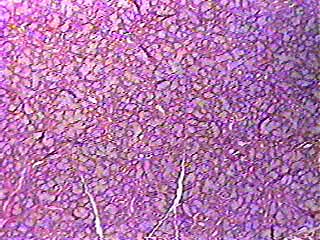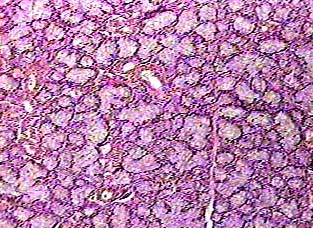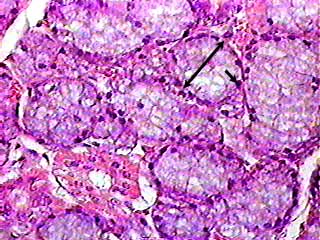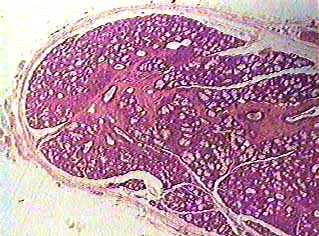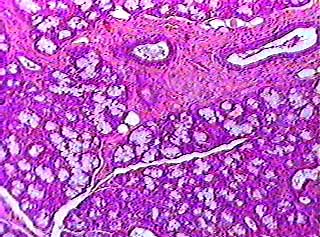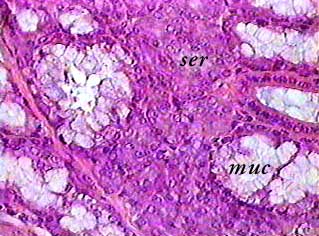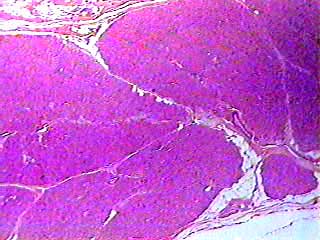
There are nine images on this page--three magnifications each
of the three types of salivary glands (parotid, submandibular,
and sublingual. The first thing you have to know about the salivary
glands is the difference between serous cells and mucous cells.
Mucous cells produce mucus, which doesn't stain very darkly, so the mucous cells look almost clear on these images and on slides. Serous cells produce a watery secretion that contains a lot of proteins. Serous cells stain fairly dark. Each of the three glands has different proportions of these two cell types. The parotid glands contain nothing but serous cells. The submandibular glands contain both mucous and serous cells. The sublingual glands contain mostly mucous cells with just a few serous cells. You can use this information to figure out which of the three salivary glands you are looking at.
The real problem is that the parotid gland looks a lot like
the pancreas. Both of them usually stain the same color and most
of the cells are arranged in the same pattern. But the pancreas
contains small clumps of cells called pancreatic islets or islets
of Langerhans that stain lighter and have a different pattern
of arrangement than the other part of the pancreas. So, you will
know you are looking at the pancreas when you do see the islets,
and the parotid salivary gland when you don't see the islets.
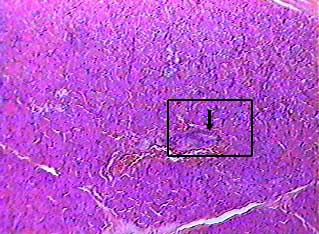
You can see ducts and blood vessels on most slides of salivary
glands. The arrow in the box points to a cross section of a duct.
Ducts are easy to recognize because most of them are lined by
simple cuboidal epithelium. Larger ducts may have simple columnar,
stratified cuboidal or even stratified columnar epithelium.
Just below the duct and to its left is a blood vessel--it
looks more red than the surrounding tissue due to the presence
of red blood cells.
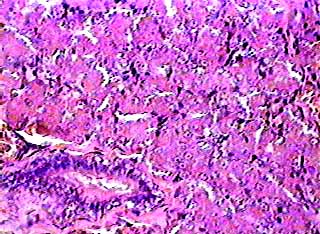
This is an enlargement of the area in the box in the image above. You can see the duct in the lower left corner, and part of a blood vessel just above it.
